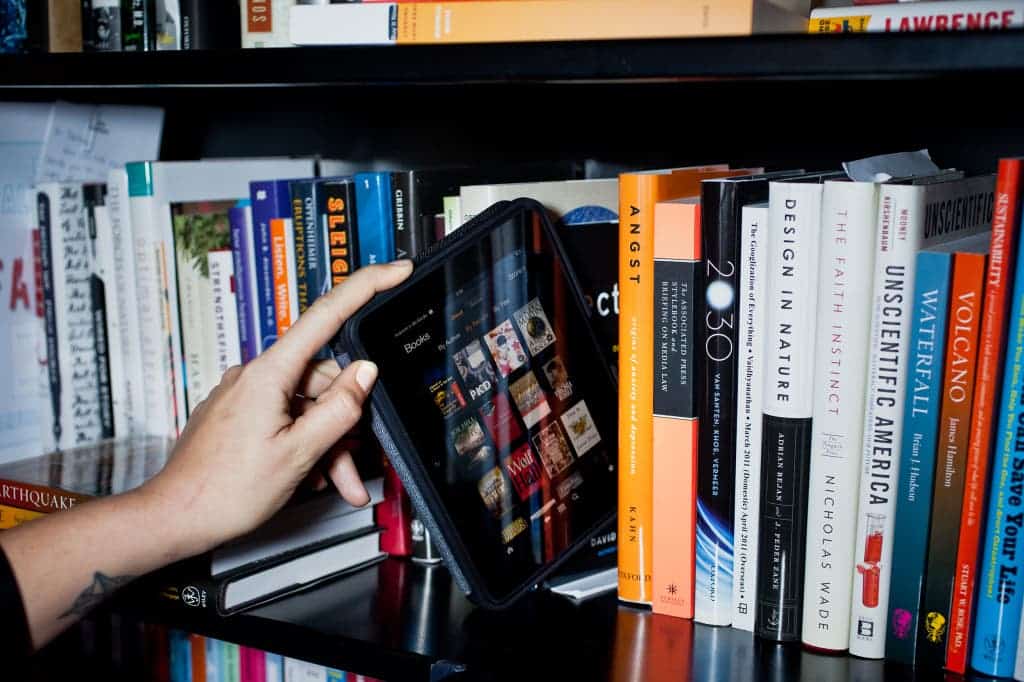Despite ebooks and their corresponding electronic reading devices have become extremely popular, surprisingly most young adults and children prefer reading in print than digitally. Moreover, this trend seems to be on the rise after a momentary preference for ebook readers. For the publishing industry and ebook reader manufacturers this most certainly means a stalemate as far as sales go, yet the big picture is uncertain. A decade ago, most experts would agree that conventional, paper books would become obsolete in favor of ereaders, which can store thousands of books. This has proven to be false. Books as we know them are here to stay and will most likely remain the main choice for reading, as far serious literature goes at least.

It’s a bit fuzzy who invented the first e-book. Some credit the first electronic document as being the Index Thomisticus, a heavily annotated electronic index to the works of Thomas Aquinas, prepared by Roberto Busa beginning in the late 1940s. However, this is sometimes omitted, perhaps because the digitized text was (at least initially) a means to developing an index and concordance, rather than as a published edition in its own right. Though opinions are polarized, most people seem to agree that the first ebook – at least similar to what we’d call one today – was Michael S. Hart, then at University of Illinois. Using a Xerox Sigma V mainframe, Hart created the first electronic document by typing the United States Declaration of Independence into a computer in 1971. Subsequently, Project Gutenberg was launched to launched to create electronic copies of more texts – especially books. As of January 2015, Project Gutenberg has over 47,975 items in its collection, most of which are public domain books, digitized and available for free.
By 2014 28% of adults had read an e-book, compared to 23% in 2013, and 50% of Americans by 2014 had a dedicated device, either an e-reader or a tablet, compared to 30% owning a device at the end of 2013. Judging from these figures, one would say that ebooks have finally taken off and they’d be right – but only half so. Printed books are still the norm it seems, if we’re to judge Naomi Baron’s research, a professor of linguistics at American University. In her latest book, Words Onscreen: The Fate of Reading in a Digital World, Baron describes her findings after she and colleagues survey over 300 university students in the U.S., Japan, Germany, and Slovakia. When students were given a choice of various media—including hard copy, cell phone, tablet, e-reader, and laptop— a staggering 92 percent said they could concentrate best in hard copy.
“The group we assumed would gobble this up were teenagers and young adults,” says Baron. “But they talked about things I didn’t think 18 to 26-year-olds cared about anymore.”
Speaking for the New Republic when asked about some possible explanations for this, Baron said:
“There are two big issues. The first was they say they get distracted, pulled away to other things. The second had to do with eye strain and headaches and physical discomfort.
When I asked what they don’t like about reading on a screen—they like to know how far they’ve gone in the book. You can read at the bottom of the screen what percent you’ve finished, but it’s a totally different feel to know you’ve read an inch worth and you have another inch and a half to go. Or students will tell you about their visual memory of where something was on the page; that makes no sense on a screen. One student said, “I keep forgetting who the author is. In a print book all I have to do is flip back and I see it.” There are all kinds of reasons students will give—“I have a sense of accomplishment when I finish a book and I want to see it on the shelf.” They care about the smell of a book. In the Slovakian data, when I asked what do you like most about reading in hard copy, one out of ten talked about the smell of books. There really is a physical, tactile, kinesthetic component to reading.”
This mirrors a conversation I had with a friend only a couple days ago. I was evangelizing the benefits of owning a Kindle and how superior I find it to conventional reading – though I still read paper books from time to time – but was constantly hit by a brick wall. Like Baron’s correspondents, my friend loathed reading on an electronic device and found great pleasure in the simple act of turning pages, the smell and so on. There’s still a heavily engraved association between reading and books – “real books” as they’re called. It’s yet another example between romantic thinking and classical thinking. Parts and against the whole.
In 2014, 65 percent of 6 to 17-year-old children said they would always want to read books in print—up from 60 percent two years earlier. So not only do most people prefer physical books, this preference is on the rise. And these are young people, persons who have now been used to being surrounded by computers, mobiles phones and various gadgets all their lives.
ZME Readers, physical books or ebooks? Why?


